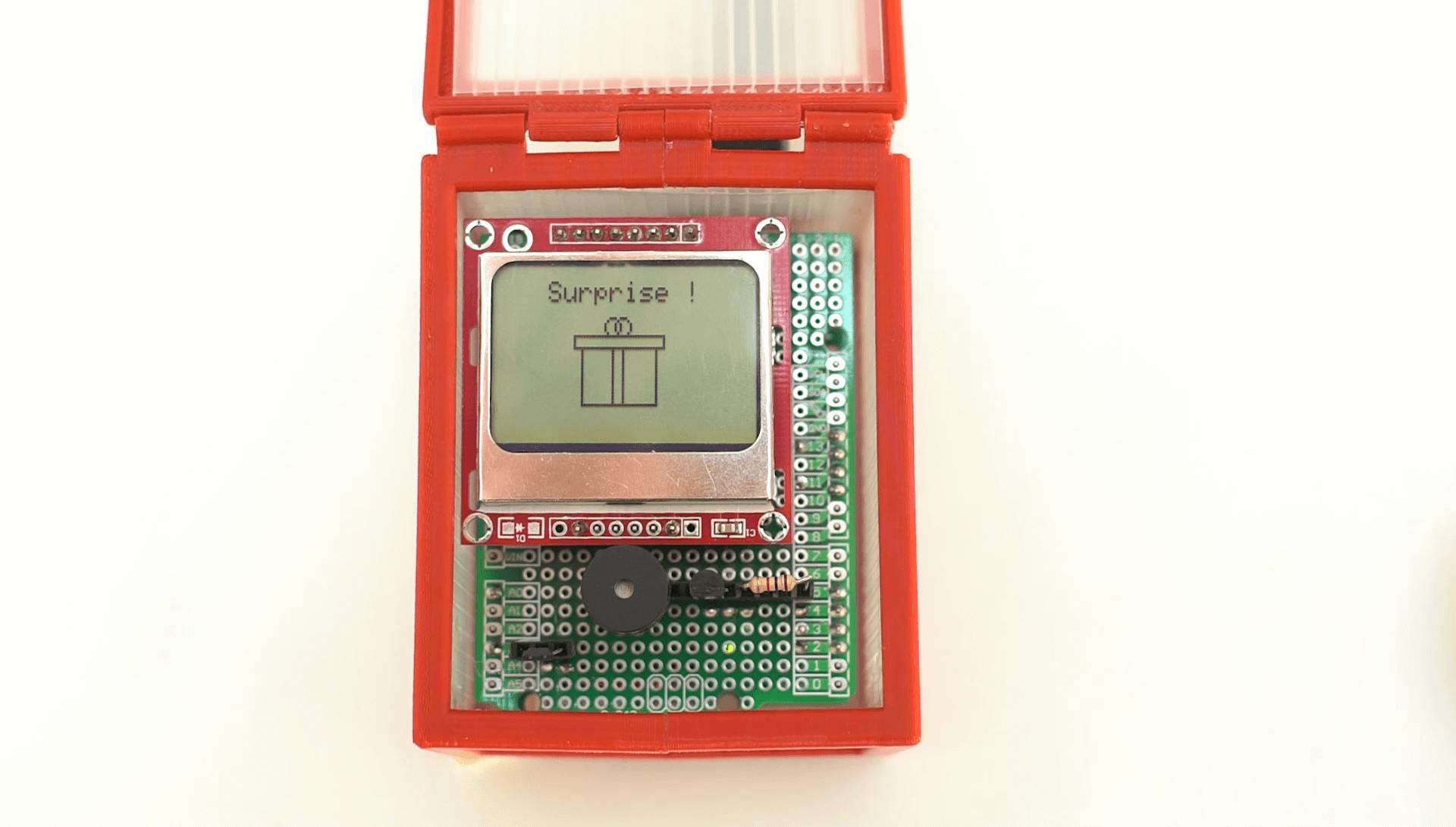A Cool Arduino Gift Box or What Can You Do With a Hall Effect Sensor?
While we're often told to 'Say it with flowers' a few of us (probably more than just a few in our little community) would prefer to 'Say it with tech'. Today's project is all about the joy of gifting with our nifty little Arduino enabled gift box.... a Giftduino if you will. The Giftduino we'll be building today makes use of a hall effect sensor plus a magnet to detect when the box is opened.

Putting it together
For those of you who may not know already, a hall effect sensor is able to detect magnetic fields and more importantly, it's able to detect when those magnetic fields change. In this project, we will be using a hall effect sensor as well as a magnet attached to the interior of the lid to detect when the Giftduino is opened in order to trigger the attached speaker and LCD display to begin playing the greeting message we created.
This is a very easy build with simple assembly and coding that is ideal for beginners looking for a simple but fun project as an entry point to DIY electronics. You can get technical specs and assembly instructions for the Giftduino here.
Customize it
There are plenty of ways that you could customize the Giftduino to make it uniquely your own as well as making a number of improvements so that it can better fulfill your needs. First up, you could consider adding a battery into the system assembly in order to make the whole package both more aesthetically pleasing as well as much more portable with no power cables or proximity to a wall socket needed in order to have it work as desired.
While adding a battery will need you to adjust the gift box to be bigger, that's probably also a good idea in its own right. in our demonstrator piece, the Giftduino is pretty much sized to contain little more than the kit it needs to operate. And while a Giftduino is a great present in itself, increasing the size of the box will allow you to add in an additional present. While you're at it, you could also customize the speaker and screen, add LEDs or even add a layer to the gift box to conceal the equipment with only the screen and the present/s inside initially visible making it a much neater package overall.
Alternative Applications
A hall effect sensor can be used in most places where you would use an ultrasonic proximity detector or an infrared sensor to detect changes or movement in the environment. The only primary difference is that a hall effect sensor requires a magnet to also be employed for it to detect changes while IR and ultrasonic sensors are able to function independently. Unfortunately, this usually results in hall effect sensors being overlooked when it comes to creators choosing parts for their new projects.

While the project we made used a magnetic field detector in a gift box, you could use the same principal in a variety of ways. For example, you could use hall effect sensors in a number of other simple home automation systems as toggles to detect when magnetic fields are interrupted or altered. One common use of these sensors is in the creation of contactless switches.
Or if you're looking for something a little more interesting, you could also use a combination of a hall effect sensor with a magnet to create a rudimentary security system, where a magnet placed on the edge of a door or window will cause a sensor mounted on the door or window frame to trigger an alarm if moved.
While these sensors will rarely be the sensor of choice for most applications, if you have some lying around, these are a few ways in which you could put them to work. And advanced builders often enjoy the additional level challenge created by being forced to create new projects while limiting themselves to a certain set of parts, forcing them to come up with more nuanced and innovative solutions to fulfill their goals.

What will you create?
While there are a lot of ways to trigger the gift-box screen and speaker, the Hall-effect sensor doesn't get much use to its fairly specialized functionality and we wanted to use the opportunity to show it some love.
Let us know what you thought of this Arduino build. Did you try it out for yourself? Or create your own build with some interesting modifications, or maybe even created your own unique project using the hall effect sensors in different and interesting ways? Why not share some images or videos of your work with the rest of the community in the comments.

